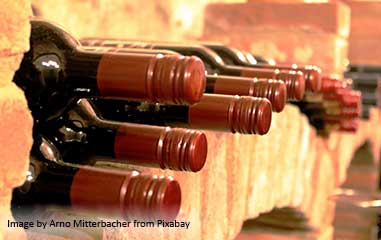
Proper wine storage is essential for preserving the quality and taste of your wine, whether you’re saving a bottle for a special occasion or simply enjoying it later. Factors like temperature, light exposure, humidity, and even bottle position can all impact how well your wine ages.
Here’s your guide to proper wine storage, covering the basics to ensure your wine stays in top condition.
1. Temperature Matters
The most critical aspect of wine storage is maintaining a consistent temperature. Ideally, wine should be stored at a temperature between 10-15°C (50-59°F). Too much heat can cause wine to age prematurely, while too cold can stunt its development. Fluctuating temperatures are particularly harmful, as they can cause the wine to expand and contract, leading to oxidation or spoilage.
2. Keep It Dark
Light, especially UV rays from the sun, can damage wine by breaking down its delicate compounds, resulting in off-flavours and aromas. For this reason, it’s best to store your wine in a dark place, away from windows or direct sunlight. If you don’t have a wine cellar, a closet or cabinet can work as a makeshift storage space.
3. Humidity Control
Wine needs a certain level of humidity to keep the cork moist, preventing it from drying out and allowing air to seep in. A humidity level of around 60-70% is optimal for wine storage. Too dry, and the cork can shrink, causing oxidation; too humid, and mold can develop. Using a small humidifier in your storage area can help maintain the right levels.
4. Horizontal is Best
Storing wine bottles horizontally, especially those sealed with corks, helps keep the cork moist by allowing the wine to remain in contact with it. This prevents the cork from drying out, which could lead to unwanted air entering the bottle. For wines with screw tops, horizontal storage is less crucial, but it’s still a space-saving practice.
5. Avoid Vibrations
Vibrations can disturb the wine’s sediment and disrupt its aging process, potentially impacting its taste and texture. Avoid storing wine near heavy machinery, speakers, or areas with frequent movement. If possible, choose a quiet, stable spot for your wine to rest undisturbed.
6. Long-Term vs. Short-Term Storage
For wines intended for short-term consumption (within a year), a cool, dark, and stable environment is usually sufficient. However, if you’re aging wine for the long term, investing in a wine fridge or building a dedicated cellar can ensure ideal conditions for extended storage.
By following these essential storage tips, you can preserve the integrity of your wine and enjoy it at its finest, whether you’re saving a special vintage or just holding onto your favourite bottle.








